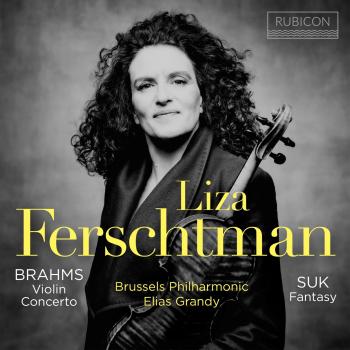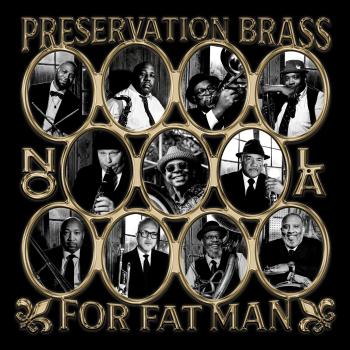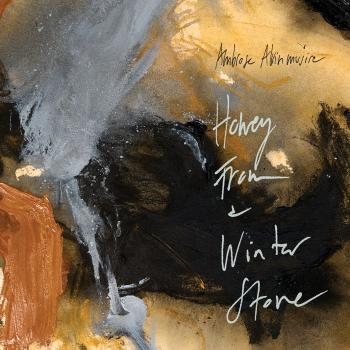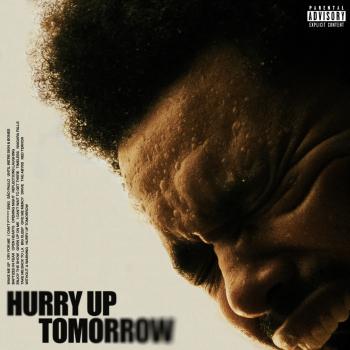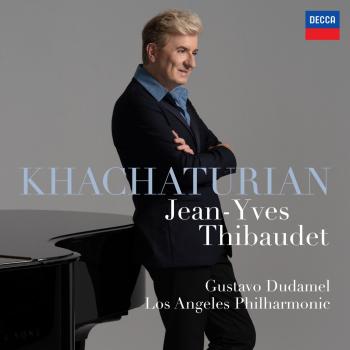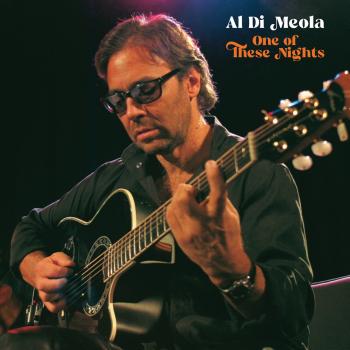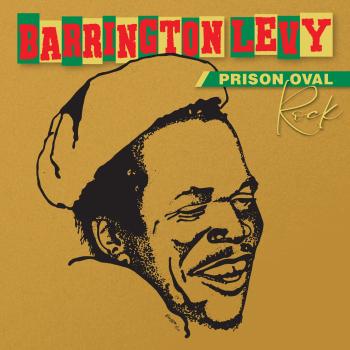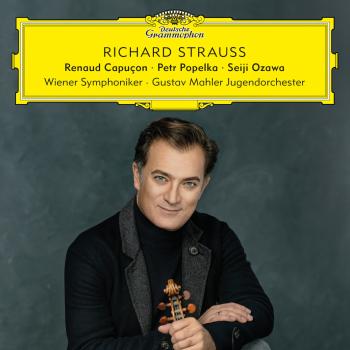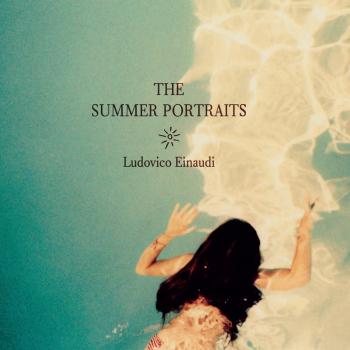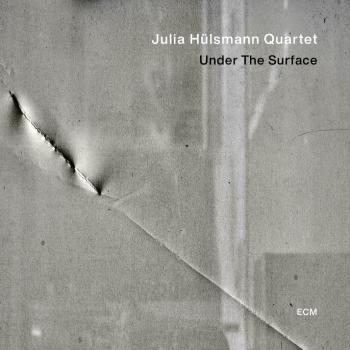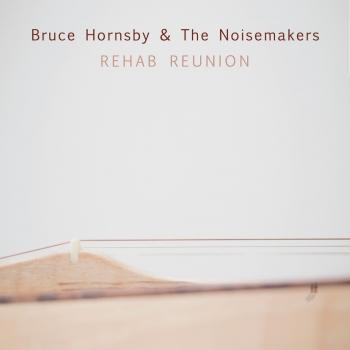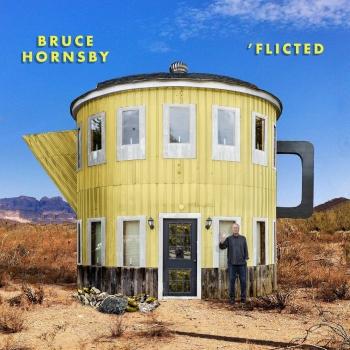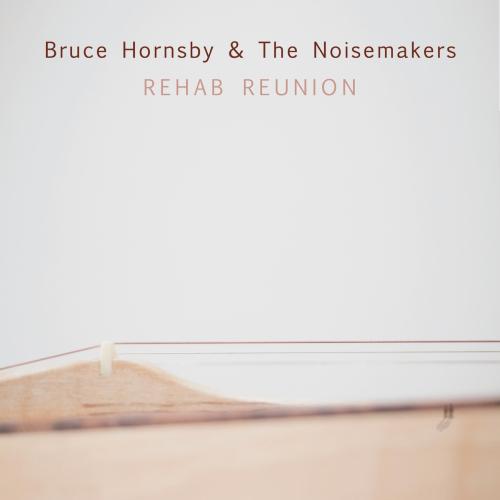
Rehab Reunion Bruce Hornsby
Album info
Album-Release:
2016
HRA-Release:
29.06.2018
Album including Album cover
I`m sorry!
Dear HIGHRESAUDIO Visitor,
due to territorial constraints and also different releases dates in each country you currently can`t purchase this album. We are updating our release dates twice a week. So, please feel free to check from time-to-time, if the album is available for your country.
We suggest, that you bookmark the album and use our Short List function.
Thank you for your understanding and patience.
Yours sincerely, HIGHRESAUDIO
- 1 Over The Rise 05:13
- 2 Soon Enough 04:41
- 3 M.I.A. In M.I.A.M.I 04:14
- 4 Tipping 03:44
- 5 Rehab Reunion 03:14
- 6 Hey Kafka 04:18
- 7 Tropical Cashmere Sweater 06:08
- 8 TSA Man 04:32
- 9 The Valley Road 06:45
- 10 Celestial Railroad 04:34
Info for Rehab Reunion
Weltweit bekannt wurde Hornsby 1986 mit seinem Hit The Way It Is, der in den USA Platz 1 erreichte. Für das gleichnamige Album, das er wie auch die Nachfolger Scenes from the Southside (1988) und A Night on the Town (1990) mit seiner Band The Rangeaufnahm, erhielt er zusammen mit der Band seinen ersten Grammy als bester neuer Künstler. In den 1990er Jahren setzte Hornsby seine Karriere als Solokünstler fort und veröffentlichte verschiedene Alben.
Bruce Hornsby, dulcimer, lead vocals
John "J.T." Thomas, organ
J.V. Collier, bass
Sonny Emory, washboard, cajon, drums
Gibb Droll, electric and acoustic guitar
Ross Holmes, fiddle, mandolin
Moyes Lucas, washboard on "The Valley Road"
Mavis Staples, duet vocals on "Celestial Railroad"
Justin Vernon, background vocals on "Over the Rise"
Bruce Hornsby
is on a roll. After taking the music world by surprise with his wide-ranging, critically acclaimed 2019 album Absolute Zero, the singer, songwriter, composer and bandleader returns with a follow-up that picks up where its predecessor left off. Non-Secure Connection features 10 new songs exploring a broad range of themes, from civil rights to computer hackers, mall salesmen to the tribulations of youth basketball.
Hornsby plays piano, of course, but the songs on Non-Secure Connection also feature Hornsby’s electric sitar and Chamberlin, along with guitars, horns, strings and subtle samples from sources as varied as minimalist composer John Cage and Scottish rockers Franz Ferdinand. Like Absolute Zero, Non-Secure Connection also features a wealth of collaborators: singer James Mercer of The Shins and Broken Bells, singer and poet Jamila Woods, Living Colour guitarist Vernon Reid, Bon Iver leader Justin Vernon and the late Leon Russell, who appears thanks to a demo that he and Hornsby recorded together more than 25 years ago.
“I must be the only person around that has a record with James Mercer, Jamila Woods, Leon Russell and Vernon Reid,” Hornsby says with a laugh. “It’s a great, disparate crowd.”
It’s the kind of unexpected roster that listeners have come to expect from Hornsby, who has built a distinctly unique career since his debut with The Range on their multi-platinum 1986 album The Way It Is. From there, Hornsby has steered his way through a stint on keyboards for the Grateful Dead, writing music for Spike Lee’s films, and albums exploring jazz, bluegrass and contemporary classical music.
“I’m often looking to make a sound that I haven’t heard before, and find a place in what I guess is the context of popular song for some new information,” he says.
Some of the songs on this album feature vivid characters: the hacker on the title track, the salesman at the mall on “The Rat King.” Where are you finding these people?
Frankly, I’m finding them in the reading that I do. “The Rat King” is inspired by a book of short stories, Friday Black, by Nana Kwame Adjei-Brenyah. He has several stories that take place in malls. So that’s where I got that. “Non-Secure Connection” just came from reading about this sort of thing, about a hacker. The music for “Non-Secure Connection” is score music that I wrote for Spike Lee. I scored films for him for about 11 years, from ’08 to ’19.
Half of these songs originated in the work you were doing for Spike. What’s the difference in your approach when you’re writing for film or TV?
I guess the best way to put it is that I’m looking for something cinematic when I’m scoring. The last record, Absolute Zero, had a good five or six out of the 10 songs that started as cues, and there’s a certain cinematic quality to the music because of that. I think I’m just trying to write atmospheric music that will fit with certain scenes.
How much is Non-Secure Connection a continuation of Absolute Zero?
I think it’s the sequel to it. My music changed when I started having the genesis of the songs be film music. I wrote over 240 cues for Spike. He probably used about half of them. But all through those years I would often feel that a certain cue I’d written, it just sounded like it wanted to be developed into a song. That atmospheric quality made me feel like I wanted to write words over it. So it was a different approach and I’ve used the same approach on about half of these songs. It takes my music to a place that I like that sets it apart from other things I’ve done.
You worked with Leon Russell on his 1994 album Anything Can Happen. Where did James Mercer and Jamila Woods come into the picture?
I’ll start with James. I’d never met him. I didn’t know him at all. But I’ve just been a big fan of the Shins, especially from Wincing the Night Away on. That’s the one that really grabbed me: “Split Needles,” “A Comet Appears.” If you know my music recently you know that I’m a big fan of melodic angularity, and James has a bit on “Split Needles” that’s sort of an angular synth line. I wrote this song, “My Resolve,” and I wanted to put a line like that in. And I thought, “I’d love to do this with someone else,” because it’s a song about creativity and the ups and downs, and I wanted a fellow climber. And since I was sort of inspired by something that he had done on the song I decided to reach out to him. He wanted to do it, and I was in Poland visiting one of my sons when I got his stuff back, and I remember very well sitting in this hotel in Toruń and hearing this fantastic, to me iconic, singer singing my song. It’s a bit of a mind blower in a beautiful way.
And Jamila Woods is on “Bright Star Cast,” with Vernon Reid.
Basically, that’s a civil rights song inspired by lots of things, including the New York Times Magazine’s “1619 Project,” about the legacy of slavery. I loved that. But also, I was inspired by the writer Taylor Branch, who wrote a magisterial three-volume civil rights-era history, and a bit in there inspired this song, “Bright Star Cast.” I wanted to find someone who was a kindred spirit in this world, and in this sort of civil
rights milieu. And so a great guy named Eric Deines from Jagjaguwar Records turned us onto Jamila, and I emailed her out of the blue and she wrote back and said, “I’m in.” That was really fortunate for me that she said yes because she did such a great job.
And Vernon Reid?
Here’s why he’s on that song. That song was a cue used for a crazy Spike movie that I scored called Da Sweet Blood of Jesus. Spike said, “Hey, let’s bring Vernon in on this.” And I knew Vernon a little bit anyways, he’s a beautiful guy, great musician. In the Range days, we played a gig with Living Colour in Germany in 1990, and that was great fun. And he came in and roared on that song. So that’s that. And of course, there’s Rob Moose, who did string arrangements. He has become sort of my mainstay, like he is for so many people.
“Bright Star Cast” seems like you’re coming full-circle to “The Way It Is,” which is also a civil rights song in its way.
Well, of course it is. If you make a little club of my songs that have dealt with the topic of racism in America, there are a good number of them. “The Way It Is” is the first one. The second one, I believe, was “Talk of the Town” on Harbor Lights, about the first interracial romance in my town, here in Williamsburg, and all the consternation it caused among the conservative white people. Then there was “Great Divide” and “See the Same Way,” two songs on my Spirit Trail record. So “Bright Star Cast” joins the club, and now it’s a club of five songs. It’s obviously very clearly something that I’ve felt strongly about for a really long time.
Then you have “Shit’s Crazy Out Here.”
It’s a song about dysphoria in the Darwinian world of summer AAU basketball. [Laughs] But it’s also a metaphor for our crazy world because there’s a lot of dysphoric feeling out there now. Musically, I call it Arnold Schoenberg and Elliott Carter meet the Beatles at the Boo Williams Sportsplex.
What do you make of the New York Times saying your last album was good because it was “complex and untrendy.” Does the same hold true for Non-Secure Connection?
Well, I would say regarding the complexity area, this new record’s chromaticism and dissonance quotient is exactly twice as high (three songs featuring that language compared to one and a half on the last record), and as to untrendy, I feel like my music has never been a part of any trend that defined any era of music during my 34 years of doing this. I may be wrong, but that’s how it feels to me.
This album contains no booklet.

